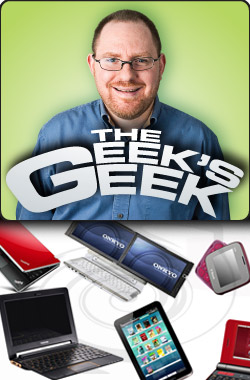Americans Getting Short Shrift From Gadget Makers
Want a dual screen netbook? You can get one, if you fly to Japan. Intrigued by the possibility of a tablet with a 1366 x 768 display and a unique UI on top of the Meego OS? Book a flight to Germany. Want a stylish 11-inch ThinkPad Edge with a lot more power and battery life than the X100e? You'll find it on sale in jolly old England, but not here in the U.S.
In many ways, the tech industry functions as if this shiny new thing called the Internet doesn't exist and people in Topeka won't know what's being sold in Taipei. But in 2010, the minute a new gadget hits store shelves in Akihabara or gets posted for pre-order on Amazon Germany, everyone hears about it. In fact, we recently compiled a list of top gadgets you can't buy in the U.S. and had trouble whittling it down to just 10.
Why can't you just buy the best mobile tech that manufacturers anywhere in the world have to offer? There's a cost to marketing and selling a mobile tech product in each country and—whether it's a vendor who says "no" or a retailer that won't stock the product—nobody wants to lose money on a poor seller.
Unfortunately, when the powers that be decide not to bring all the best gear here, many times they're operating on some poor assumptions about a 300 million-person market in one of the world's most diverse countries. Here are some of the common misconceptions they carry:
- Americans always think that bigger is better. When you look at the paltry sales numbers for 11 to 13-inch notebooks in North America, you can see why Lenovo wouldn't bother releasing the ThinkPad Edge 11 here, Samsung isn't selling anything under 14-inches, and HP has refreshed its awesome 13-inch ProBook 5310m in Europe only. However, the popularity of netbooks and tablets shows that Americans value portability a great deal; sellers just need to do a better job of explaining the benefits of an ultraportable notebook over a netbook or a larger mainstream system.
- Americans fear Linux and other alternative OSes. Early in the netbook era, it seemed like Linux was going to be the netbook operating system of choice. Then we started hearing about huge return rates for Linux-based netbooks and the nascent category switched to Windows XP almost overnight. I'm not doubting that some of the returns were real, but when you're installing hard-to-use distros like openSUSE and not providing any documentation or app store, what do you expect? In a year's time Android, a form of Linux, went from a relative unknown to the fastest growing smart phone platform—and even my tech-phobic mom loves it. Surely, an Android smartbook such as the Toshiba AC100 or netbooks running Linpus, Meego, and Jolicloud would be intelligible to her.
- If it's not a well-known brand, Americans won't buy it. This just doesn't hold water. HTC was a relatively obscure brand until recently, but they built quality products that got attention and now they're riding high. Until 2008, ASUS and MSI were known on these shores as component manufacturers.
- Americans will run away screaming from products with non-Intel / AMD CPUs. In other countries, you can get a notebook with a VIA nano CPU, but not here. I'm not saying VIA makes a better product (it doesn't), but there are many products with acceptable performance that run on its platform. Last year, we reviewed the Nano-powered Samsung NC20 and loved it, but the product was hard to come by here in the U.S.
- If the technology isn't totally perfected yet, Americans won't buy. Toshiba and HP are two companies with a huge U.S. presence, but both of them decided to release their first (and possibly only) Android smart books elsewhere. HP's Compaq Air Life only made it to one country: Spain. But both were wrong to think that Americans wouldn't be willing to give these nascent devices a try. Just look how quickly consumer media tablets, another new device category, have caught on here.
So what can Americans do to combat these prejudices and ensure they get a fair shot at the most innovative mobile tech? First, we can vote with our wallets for portable technologies by purchasing more ultraportable notebooks and MIDs. Second, we can reward retailers such as Dynamism who stock more obscure devices that are hard to come by on these shores. And finally, we need to make our voices heard by complaining to vendors when they don't bring us their best.
However, ultimately the best solution lies in the vendors' hands. In the 21st century, there's no valid excuse for treating each country as a separate universe. Vendors should take the bold initiative of setting up global commerce sites that ship the same products to dozens or hundreds of different countries. This would require not only a willingness to ship products across borders, but also the flexibility to throw a different AC adapter in the box, depending on local electrical system.
Microsoft and other software vendors need to help by making international versions of Windows and popular apps like Office so users can set the language when they first turn a new notebook on. My TV has the ability to change menu languages on the fly. So should my computer.
Sign up to receive The Snapshot, a free special dispatch from Laptop Mag, in your inbox.
Americans should be able to get the best technology the world has to offer as soon as it becomes available. Global consumers in a global economy deserve no less.
Online Editorial Director Avram Piltch oversees the production and infrastructure of LAPTOP’s web site. With a reputation as the staff’s biggest geek, he has also helped develop a number of LAPTOP’s custom tests, including the LAPTOP Battery Test. Catch the Geek’s Geek column here every other week or follow Avram on twitter.


